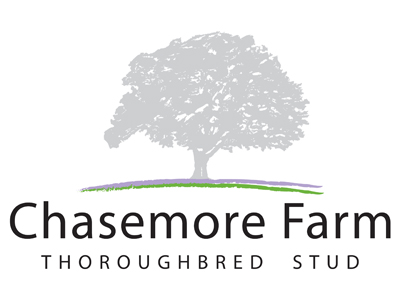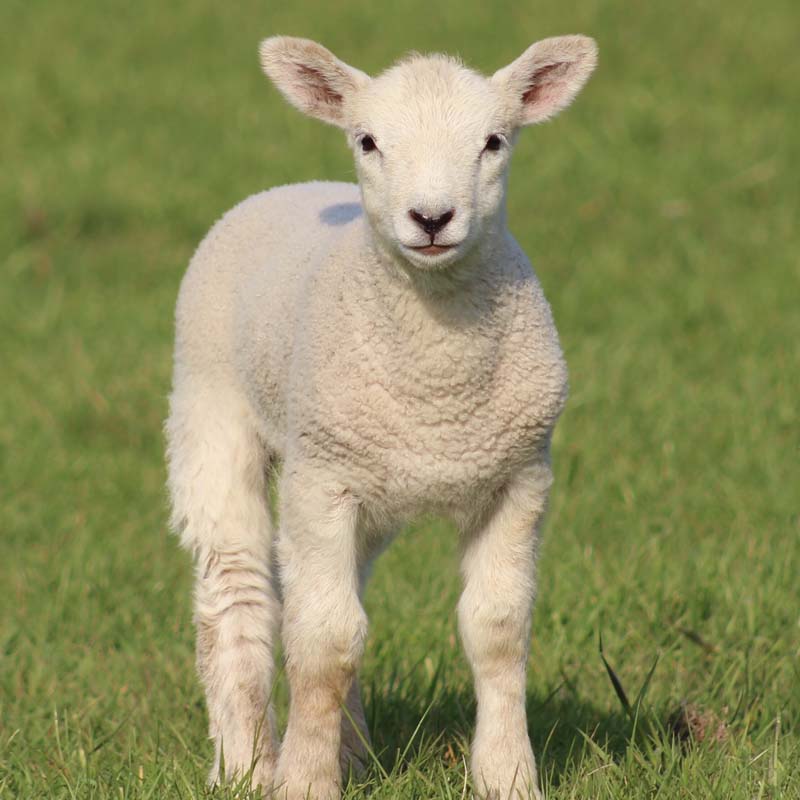It’s not all about horses and humans at Chasemore Farm. Our resident sheep also play an important part in the operation, especially when it comes to grass management.
As lambing season has now come to a close, our estate manager Jamie Lewis tells us all about the stud’s woolly wonders.
To help with the pasture management on the farm, we run a small flock of sheep who graze the paddocks after the horses. The sheep eat the less desirable grasses and weeds left by the horses, which stops them reproducing and spreading throughout the paddocks, while also helping to level ruts and divots left by the horses over winter.
After the sheep have been through a paddock, the grass grows back much more uniformed, thicker and healthier, and that in turn helps to keep the weeds out in the future.
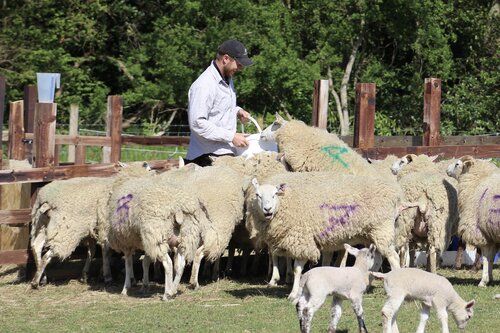
Our ewes are a Mule x Texel breed, and our Rams are Charolais. I particularly like this cross because the ewes have good motherly traits from the Mule, producing plenty of milk and having a good maternal instinct to protect and teach their lambs, but they also have a nice frame and size from the Texel.
Crossing these ewes with Charolais rams helps to give the lambs a small head and shoulders, which helps with ease and safety of lambing, while still producing a lamb that has a long frame and great muscle conformation.
Due to the influx of grass in the peak growing season from May to September we need more sheep on the farm in the summer than in the winter months, so the solution to this problem is to breed lambs yearly.
Our resident flock is between 40 and 50 breeding ewes, five breeding rams and a teaser ram, but with the arrival of lambs we have more than 130 sheep on the farm during the summer months.
The rams are introduced to the breeding ewes in early November after the ewes have been synchronised with the teaser ram and by using a technique called ‘sponging’. By doing this we can start the ewes cycling all at the same time, which will reduce the period in which they could lamb in the spring, helping us to work efficiently.
The rams wear a ‘raddle’, which is essentially a harness with a coloured wax crayon attached, so when the ram mates with a ewe he leaves a visible mark. Everything at the farm follows our corporate colours, so the rams first crayon is green, which is replaced with a purple one for the second cycle of the ewes.
We scan the sheep in early February to help determine how many animals we are expecting to lamb and can split them accordingly. This year we had 45 in-lamb ewes and they came into the barn in late March so that we could keep a close eye on them ready for when they are ready to give birth.
An important lesson to note is that if you don’t know how many lambs the ewe is expecting, always check after the first that you are not expecting another! A ewe will commonly give birth to one or two lambs, but can also lamb triplets or higher. This is undesirable as a ewe has only two teats and can therefore only successfully rear two lambs.
If a third lamb was left with its mother and two other siblings, the smallest or weakest would probably not get enough milk from the ewe because the other lambs will outcompete it for the teat, so we foster triplet lambs onto a foster mother who will have only had one lamb.
This year we had three sets of triplets and fostered three lambs onto foster mothers, which all went successfully. To do this, you have to trick a single who is lambing into thinking she has had two lambs instead of one. This can be especially difficult if the triplet lamb you are trying to foster stands up straight away and calls for its real mum when it is supposed to be acting as if it has just been born.
Fostering will ensure that all the lambs have the best chance of surviving the early crucial stage of life and is a necessity. Fortunately, we were lucky that all the foster mothers took to their new lambs this year.
Lambing is a crazy time of excitement and nervousness. In the run up I feel anxious because I want it to all go smoothly as it is a high-stress, high-risk time for the ewes. Once the ewes are in the barn, they reciprocate this feeling by sitting in the straw all day eating hay seemingly not caring about what’s happening!
They keep you on your toes by laying in the straw and stretching and straining, making me grab my gloves and jump in ready to help… only for them to just cough.
Inevitably the first one always lambs when you’re not there and normally it’s a phone call from one of the many brilliant members of staff who have decided to drop by to check on the sheep.
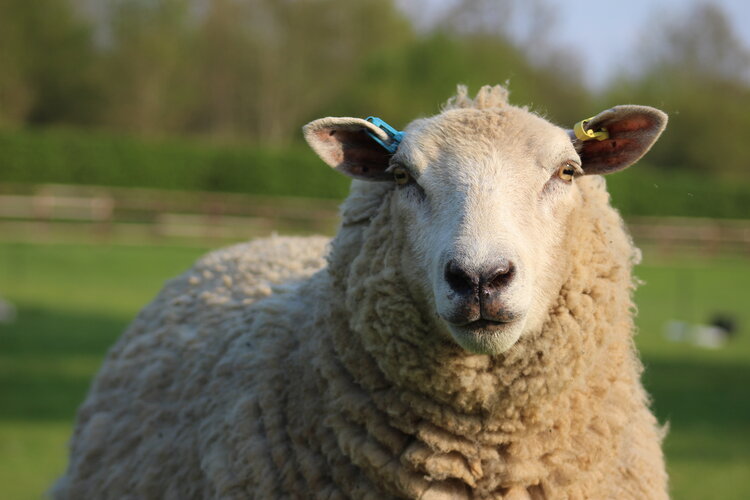
When a ewe is about to lamb we separate her into her own dedicated pen and check the lambs are presenting correctly. A lamb is supposed to come out in a position like a diver, front feet out first in front of its head which smoothly helps the lamb to be born safely.
The reason we check is because it’s not always the case and checking early gives you more time to react and help before it’s too late. Commonly we will only have one leg forward, which requires some manoeuvring of the lamb inside the womb to bring its second leg forward and lamb it safely.
Less commonly there are back legs only, which is still okay as long as you are careful and support the lamb. Other times there may only be a tail, in which case you really have to manoeuvre the lamb to make sure you get its back legs out to birth it safely. If you don’t interact here, the lamb will get stuck and will not be born.
Sometimes there is only a head and no legs, which can be a very fragile situation if you can’t get the front legs forward.
This happened to us with a lamb this year, which started being born head first and was alive and conscious while getting stuck due to its trailing legs. You can’t push the head back for risk of suffocating the lamb, and the whole situation is very stressful as you have a new-born life in your hands. After half an hour of carefully manipulating the ewe and lamb and making sure the lamb stays alive and breathing clearly, we managed to get a single leg forward and birth the lamb safely, which was followed in quick succession by its twin sibling.
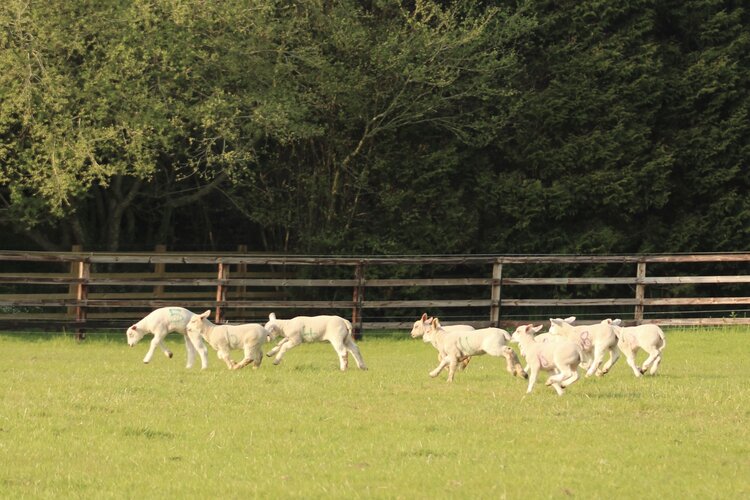
Lambing really is a team effort and I could not do it as successfully without the help of the team at Chasemore Farm, especially the overnight foaling staff Bev and Maggie. They both regularly check the sheep overnight and call me when things are starting, helping me to get as much sleep as possible during the very busy season while knowing the animals are being looked after!
The brilliant members of my estate team, Sam, Oscar and Tom, who are helping run the rest of the farm, also lend a hand with the lambing; checking ewes and giving them hay and straw, giving milk to any weak lambs, moving and medicating lambs and cleaning empty pens.
Unfortunately, things don’t always work out perfectly, but we only lost a single lamb during lambing this year, having 81 lambs from 45 ewes in total.
Once the lambs are born, they need to be drinking from mum within the first hour. Pre-Lambing, we give the ewes a vaccination which will protect them from a range of bacterial infections. This is timed perfectly so that the ewes will pass the antibodies for those infections onto their lambs through the milk, particularly the colostrum (the high energy first bit of milk from the ewe).
It’s amazing that half an hour after being born, most lambs are standing up, staggering around, and drinking from their mum. Some lambs need a helping hand to find the teat the first time, but once they start drinking from mum they quickly learn.
After a day or so, once the lambs are bright and strong, we ring the lambs and spray paint a number onto their sides. There is a colour coding system which helps us to identify any lambs that get lost from mum or mismothered. In keeping with our Chasemore colours, singles have a green number and twins have a purple number.
In the field you can then instantly identify that Number 1 lamb is standing with Number 2 ewe, or a purple ewe who is supposed to have two lambs only has one. The lambs are put into a bigger pen with three or four other sets of ewes and lambs in the barn to help mother and strengthen for a few days until they go out to grass.
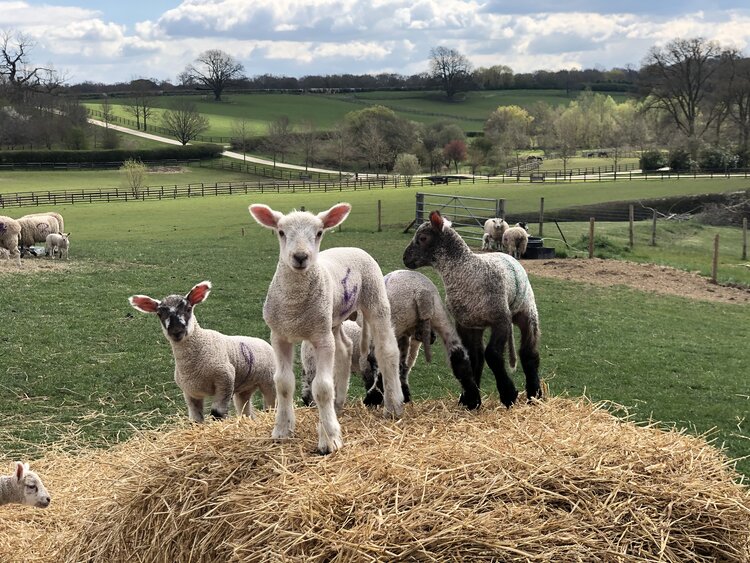
Currently our lambs are between four and six weeks old and are bounding around the fields, bopping around like schools of fish while the ewes are heads down grazing. When you spend time with them regularly you see social groups and best friends develop and can tell the boisterous lambs from the timid ones.
The most inquisitive lambs are starting to eat the hard feed we put out for their mothers, and it won’t be long before they’re relying less on mum for milk and more on the forage and feed around them.
At this point, we’ll wean the lambs and, like parents dropping their kids off at the grandparents for the holidays, the ewes can’t wait for a break! The lambs will then join the important cycle of grazing the pasture to improve it for the horses and the stud.
It always amazes me to see a lamb biting into a large thistle or stinging nettle and going back for more until the weed is entirely gone, which in turn helps us to reduce our reliance on herbicides to control the weeds on the farm. It’s a more holistic solution.
The lambs stay on the farm until the autumn when they leave for the abattoir. At this time they are around 42kg, far from the small animals you see in the spring. We sell all of our lamb through Bevan’s Butchers, a local butcher with shops in Effingham, Esher and Kingston.
Particularly with the shop in Effingham, you can get grass-fed lamb that has been born and raised within five miles of the shop. That has to be the ideal product for today’s consumer who wants local and traceable lamb, and they know it has enjoyed its life living on the Surrey Hills as part of a bigger picture.
